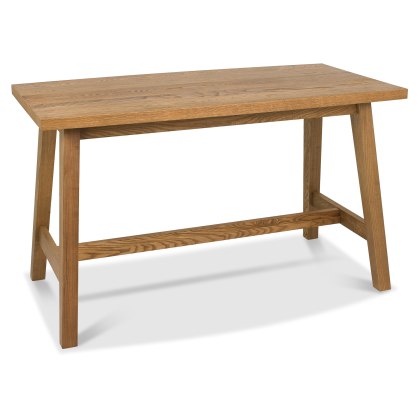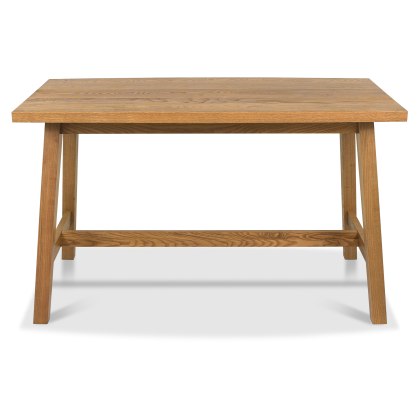Bar Tables
Camden Rustic Oak Bar Table
The Bentley Designs Camden range combines traditional forms with a contemporary edge by way of gently curved “barrel shaped” table tops and cabinet facias. Wire-brushed and saw cut laminated oak table tops, combined with solid ash “A” frame legs make a real statement and the rich oiled finish will add warmth to any dining space.
£899

